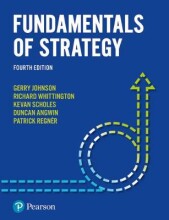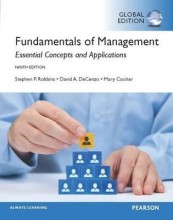Summary: H19 - Gaswisselingsorganen Bij Vertebraten
- This + 400k other summaries
- A unique study and practice tool
- Never study anything twice again
- Get the grades you hope for
- 100% sure, 100% understanding
Read the summary and the most important questions on H19 - Gaswisselingsorganen bij vertebraten
-
1 -
This is a preview. There are 5 more flashcards available for chapter 1
Show more cards here -
What is cutaneous respiration? Which animal types use this?
- Respiration through direct diffusion of gasses between organism and environment.
- Mostly used by amphibians, fish, sponges and many worms. Also in mammals, but to a very small extent.
- Respiration through direct diffusion of gasses between organism and environment.
-
What is the tracheae respiration system, how does it work and what animals use this system?
- It is a branching system of tubes (tracheae) that extends to all parts of the body.
- The smallest end channels are fluid-filled tracheoles which terminate close to the plasma membranes of the cells.
- Air enters and leaves the system through valves called spiracles.
- Used by insects.
- Some insects can ventilate the tracheal system with body movements.
- Independent of the blood circulation.
- It is a branching system of tubes (tracheae) that extends to all parts of the body.
-
Explain how internal gills of fishes work.
- Gills are thin, filamentous structures that are richly supplied with blood vessels arranged so that blood flow is opposite to the flow of water across the gills. This is called countercurrent flow and it provides the best possible extraction of oxygen from the water.
- Water flows over the gills in a steady stream, pulled and pushed by a 2-valved branchial pump composed of the mouth and opercular cavities.
- Gills are thin, filamentous structures that are richly supplied with blood vessels arranged so that blood flow is opposite to the flow of water across the gills. This is called countercurrent flow and it provides the best possible extraction of oxygen from the water.
-
What is a disadvantage of lungs?
A disadvantage is that gas is exchanged between blood and air only in the alveoli and alveolar ducts, located at the end of a branching tree of air tubes.
Air must enter and exit through the same channel. After exhalation, the tubes are filled with used air which is pulled back into the lungs with fresh air. This air shuttles back and forth with each breath, decreasing the efficiency of gas exchange.
So inefficient in humans that 20-35% of the air remains in the lungs. -
What are the 3 important changes that air goes through in its passage to the alveoli?
- It is filtered free from most dust and other foreign substances.
- It is warmed to body temperature.
- It is saturated with moisture.
-
Explain the difference between intrapleural and intrapulmonary pressure.
- Intrapleural pressure is the pressure between the visceral and the parietal pleura.
- Intrapulmonary pressure is the air pressure in the lungs.
-
2 -
This is a preview. There are 7 more flashcards available for chapter 2
Show more cards here -
Explain what happens with intrapleural and intrapulmonary pressure and tidal volume during a breath.
- Inhalation: Ribs are pulled upwards, diaphragm flattens, chest cavity increases in size, intrapleural and intrapulmonary pressure decrease, air rushes through passageways to equalize the pressure, therefore increase in tidal volume.
- Exhalation: Ribs return to their normal position, chest cavity decreases in size, intrapulmonary and intrepleural pressure rises and air leaves the lungs and decrease in tidal volume.
-
How is breathing controlled in the brain?
- Normal breathing is automatic, neurons in the medulla of the brain produce rhytmical burst that stimulate contraction of the diaphragm.
- Breathing is adapted for changing requirements of oxygen. CO2 has greatest influence, because chemoreceptors in the medulla, and in the PNS close to the heart and neck, are more sensitive to elevated CO2 levels than O2. Small rise in CO2 has a great effect on respiratory activity.
-
What are respiratory pigments? Explain their role.
- Respiratory pigments are colored proteins that transport O2 and CO2.
- Most important one is hemoglobin (5% heme, binds oxygen + 95% globin).
- Respiratory pigments are colored proteins that transport O2 and CO2.
-
What is the influence of the O2 concentration on the binding of O2 to hemoglobin?
In vessels with high O2 levels hemoglobin binds O2. In vessels with low O2, hemoblobin releases its O2 reserves.
- Higher grades + faster learning
- Never study anything twice
- 100% sure, 100% understanding
































